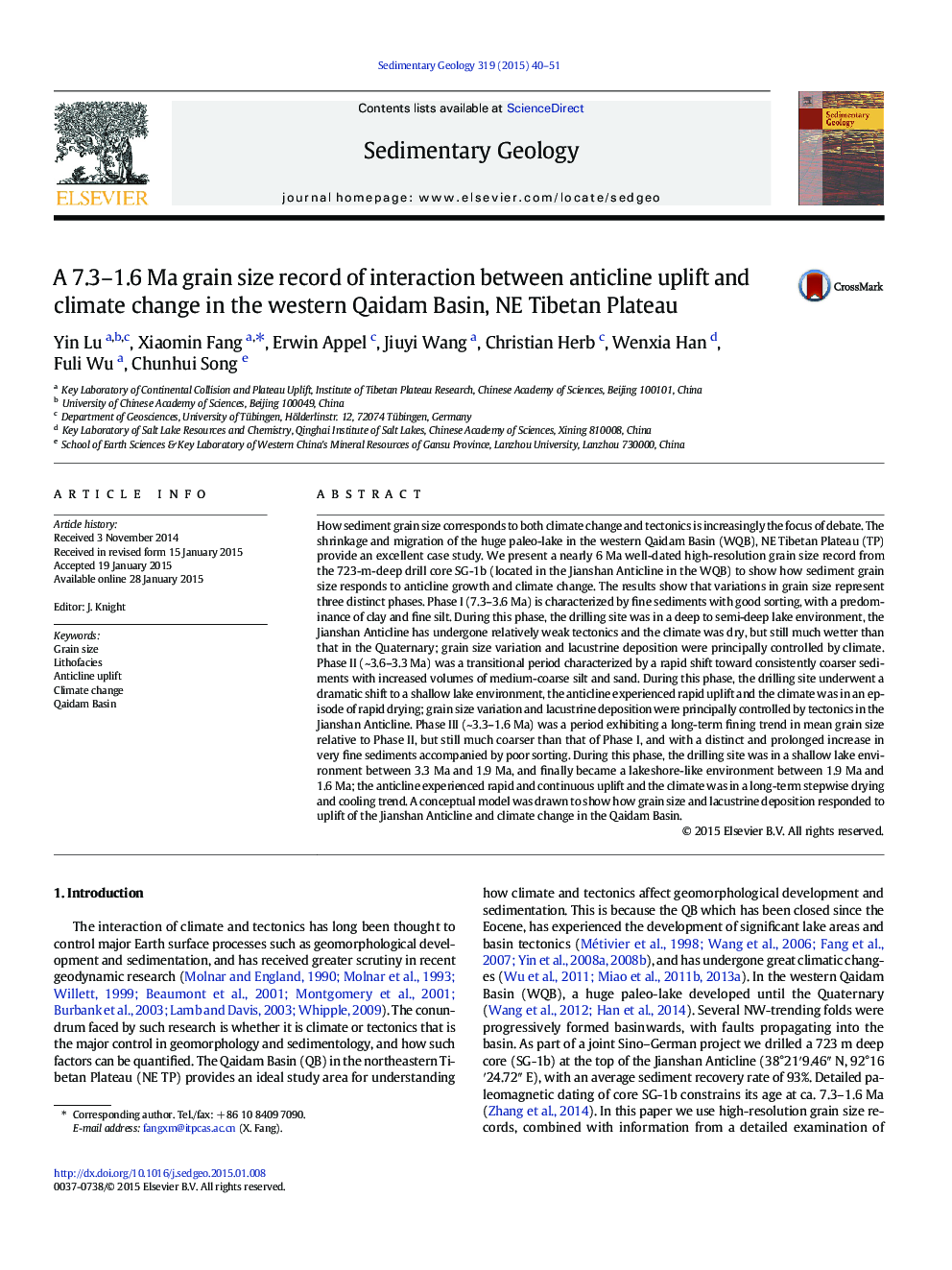| کد مقاله | کد نشریه | سال انتشار | مقاله انگلیسی | نسخه تمام متن |
|---|---|---|---|---|
| 4689319 | 1636044 | 2015 | 12 صفحه PDF | دانلود رایگان |

• A 723 m deep core located at the top of an anticline in western Qaidam Basin has been studied.
• 7.3–1.6 Ma records of grain-size, lithofacies and growth strata sequence are presented.
• Tectonics and climatic change control the anticline development and sedimentary records.
• The long-term shrinkage of the paleolake at the anticline area started at 3.6 Ma.
• The dramatic shift from a semi-deep to a shallow lake happened between 3.6 Ma and 3.3 Ma.
How sediment grain size corresponds to both climate change and tectonics is increasingly the focus of debate. The shrinkage and migration of the huge paleo-lake in the western Qaidam Basin (WQB), NE Tibetan Plateau (TP) provide an excellent case study. We present a nearly 6 Ma well-dated high-resolution grain size record from the 723-m-deep drill core SG-1b (located in the Jianshan Anticline in the WQB) to show how sediment grain size responds to anticline growth and climate change. The results show that variations in grain size represent three distinct phases. Phase I (7.3–3.6 Ma) is characterized by fine sediments with good sorting, with a predominance of clay and fine silt. During this phase, the drilling site was in a deep to semi-deep lake environment, the Jianshan Anticline has undergone relatively weak tectonics and the climate was dry, but still much wetter than that in the Quaternary; grain size variation and lacustrine deposition were principally controlled by climate. Phase II (~3.6–3.3 Ma) was a transitional period characterized by a rapid shift toward consistently coarser sediments with increased volumes of medium-coarse silt and sand. During this phase, the drilling site underwent a dramatic shift to a shallow lake environment, the anticline experienced rapid uplift and the climate was in an episode of rapid drying; grain size variation and lacustrine deposition were principally controlled by tectonics in the Jianshan Anticline. Phase III (~3.3–1.6 Ma) was a period exhibiting a long-term fining trend in mean grain size relative to Phase II, but still much coarser than that of Phase I, and with a distinct and prolonged increase in very fine sediments accompanied by poor sorting. During this phase, the drilling site was in a shallow lake environment between 3.3 Ma and 1.9 Ma, and finally became a lakeshore-like environment between 1.9 Ma and 1.6 Ma; the anticline experienced rapid and continuous uplift and the climate was in a long-term stepwise drying and cooling trend. A conceptual model was drawn to show how grain size and lacustrine deposition responded to uplift of the Jianshan Anticline and climate change in the Qaidam Basin.
Figure optionsDownload high-quality image (118 K)Download as PowerPoint slide
Journal: Sedimentary Geology - Volume 319, 15 April 2015, Pages 40–51